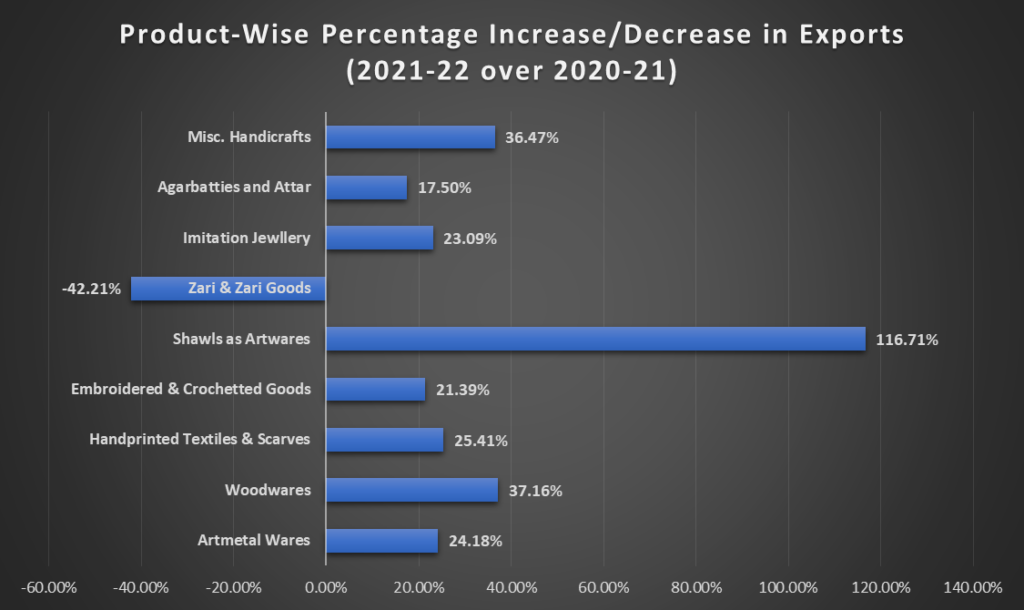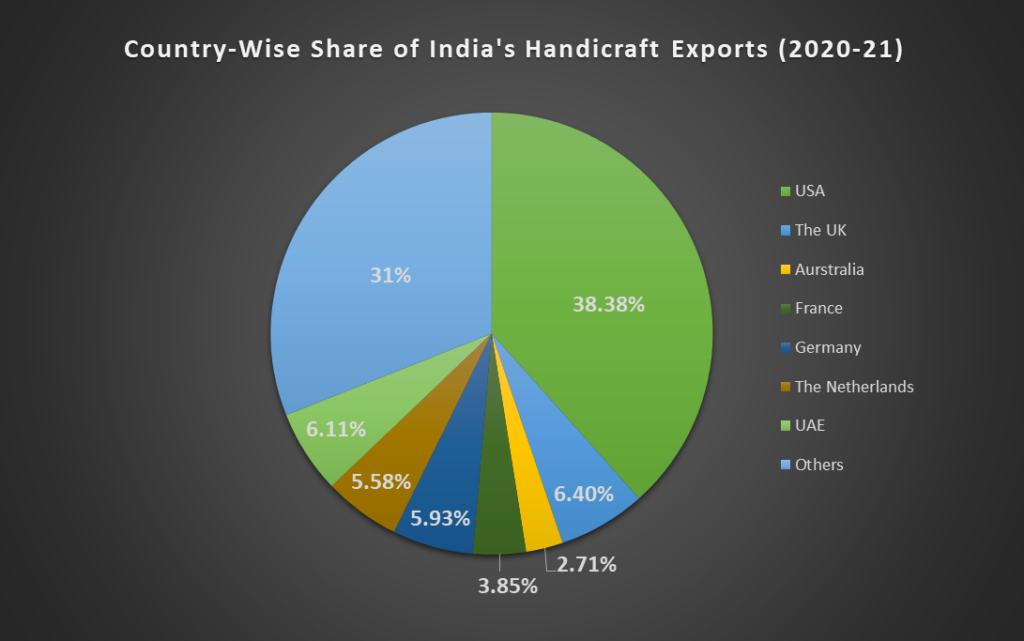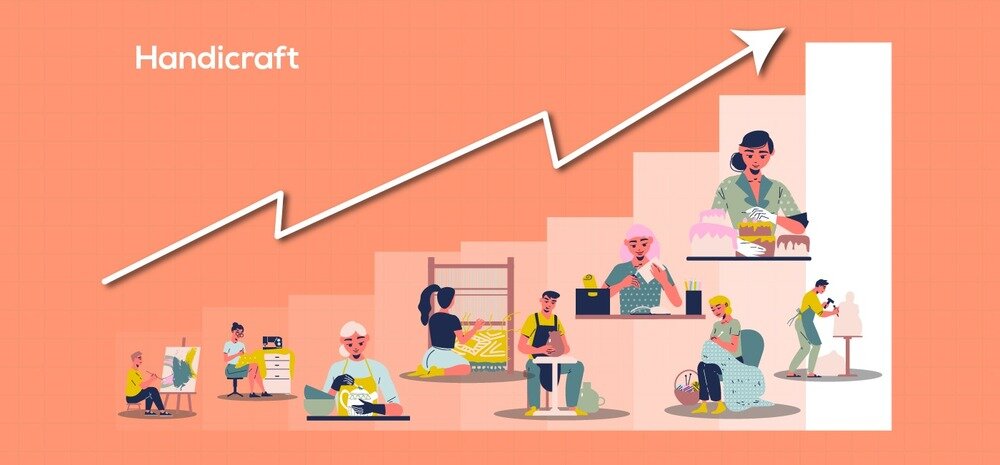Indian handicrafts are a vital part of the country’s cultural and economic fabric, with a long history dating back to ancient times. These handmade, traditional crafts are created using various materials, including wood, metal, textiles, and more, and are known for their intricate designs and high quality.
In recent years, the export of Indian handicrafts has been steadily rising, making it a significant contributor to the country’s economy.
Importance of Handicrafts Industry
One of the key benefits of the handicrafts sector is that it employs millions of artisans and craftspeople across the country, many of whom come from rural and disadvantaged communities. As a result, the industry is a vital income source for these individuals and supports the growth and development of their communities.
In addition to economic benefits, the handicrafts sector also plays a vital role in preserving and promoting India’s rich cultural heritage. Many handicrafts are created using traditional techniques and materials essential to the country’s cultural identity.
In recent years, the export of Indian handicrafts has been steadily rising, making it a significant contributor to the country’s economy. The steady growth in exports of Indian handicrafts has played a crucial role in driving economic growth and development in the country.
The growth of the Indian handicrafts market has been supported by advances in online availability and the expansion of the country’s travel and tourism industry.
As more tourists visit India, they spend money on souvenirs and other craft items, providing local artisans and craftspeople with increased opportunities to produce and sell their products. Additionally, the rising demand for handmade decor accessories in homes, offices, and restaurants, as well as from the gifting industry, has contributed to market growth.
The handicrafts sector is economically viable due to its low capital investment, high value-addition ratio, and high export potential.
Current Indian Handicraft Market
In 2022, the size of the Indian handicrafts market reached US$ 3,968.0 million. According to IMARC Group, this market is expected to grow at a CAGR of 7.7% between 2023 and 2028, reaching a size of US$ 6,218.4 million by 2028.
The Indian handicraft industry is supported by a network of 744 clusters that employ approximately 212,000 artisans and offer more than 35,000 products.
Some major clusters are Surat, Bareilly, Varanasi, Agra, Hyderabad, Lucknow, Chennai, and Mumbai. Many of these manufacturing units are situated in rural and small towns, but there is the significant market potential for their products in cities throughout India and abroad.
Covid-19 Impact On the Handicrafts Industry
The Covid-19 pandemic has had a significant impact on the handicraft industry, with decreased demand and sales, supply chain disruptions, and adverse effects on the livelihoods of artisans and handicraft producers.
Products in the Handicraft Industry
Woodware, Artmetal wares, handprinted textiles, embroidered goods, zari goods, imitation jewelry, sculptures, pottery, glassware, attars, agarbattis, and other items are produced in the country. Female artisans account for more than 56% of the total artisan population in India.
Below is the graph showing the percentage increase/decrease in handicraft products.

Export Trends
India is one of the top exporters of handicrafts and the market leader in both volume and value for handmade carpets. India exported US$ 120.06 million worth of handicrafts in May 2022, an increase of 1.01% from April 2022 (excluding handmade carpets).
Total exports of Indian handicrafts were valued at US$ 4.35 billion in 2021-22, a 25.7% increase over the previous year. Exports of handmade products, particularly carpets, have increased steadily over the last three years.
The following graph shows that Indian handicraft exports rose from 2016 to 2022.

*Data excludes exports of carpets
Export Destination
Due to their uniqueness and exceptional beauty, demand for Indian handicraft products in foreign markets has steadily risen. The graph below depicts India’s main handicraft export destinations.

India exports carpets to over 70 countries, with the main markets being the United States, Australia, and Europe.

The USA is a significant purchaser of shawls, zari woods, embroidered items, and handprinted textiles. Carpet exports to the United States were valued at more than US$1.2 billion in 2021-22.
The United Kingdom buys art, crocheted items, handmade handicrafts, wood wares, and imitation jewelry from India. The country has also been a significant importer of handmade carpets from India. In addition, the UAE is a substantial purchaser of handprinted textiles, embroidery goods, and art metalware.
Handprinted textiles, imitation jewelry, embroidery items, and art metals are popular purchases in Germany, which spent US$116.64 million on carpets in 2021-22.
Piyush Goyal’s take on the Indian handicrafts industry.
Union Commerce and Textiles Minister Piyush Goyal stated that Indian handicraft exports have been steadily increasing and are superior to machine-made products. Goyal emphasized the importance of the handmade products industry for a self-reliant India and mentioned the efforts of artisans to contribute to the “Atmanirbhar” (self-reliant) movement. He also said the need to work towards creating an inclusive society in India by 2047.
Government Initiatives
The National Handicraft Development Programme and the Comprehensive Handicrafts Cluster Development Scheme support and promote the handicraft industry in India through initiatives such as design and technology upgrades, training, marketing events, and shared facilities. These programs aim to increase exports and assist artisans and entrepreneurs in establishing modern units.
Final Words
India has a diverse and vibrant handicraft industry with various products, including textiles, ceramics, metalwork, and woodwork. The sector is an essential source of income and a significant contributor to the country’s economy, with India exporting handicrafts to many countries worldwide.
FAQs
What challenge is faced by handicrafts in India?
The handicraft industry in India faces challenges such as competition from cheaper mass-produced goods and difficulties in accessing markets and credit.
Which state is famous for making Indian handicrafts?
India has many states known for their particular handicraft products, such as Rajasthan for textiles and leatherwork, Gujarat for textiles and metalwork, Tamil Nadu for handloom textiles and leatherwork, and so on few of the examples.
Read more: How Long-term investing helps create life-changing wealth – TOI.
How useful was this post?
Click on a star to rate it!
Average rating 5 / 5. Vote count: 3
No votes so far! Be the first to rate this post.

